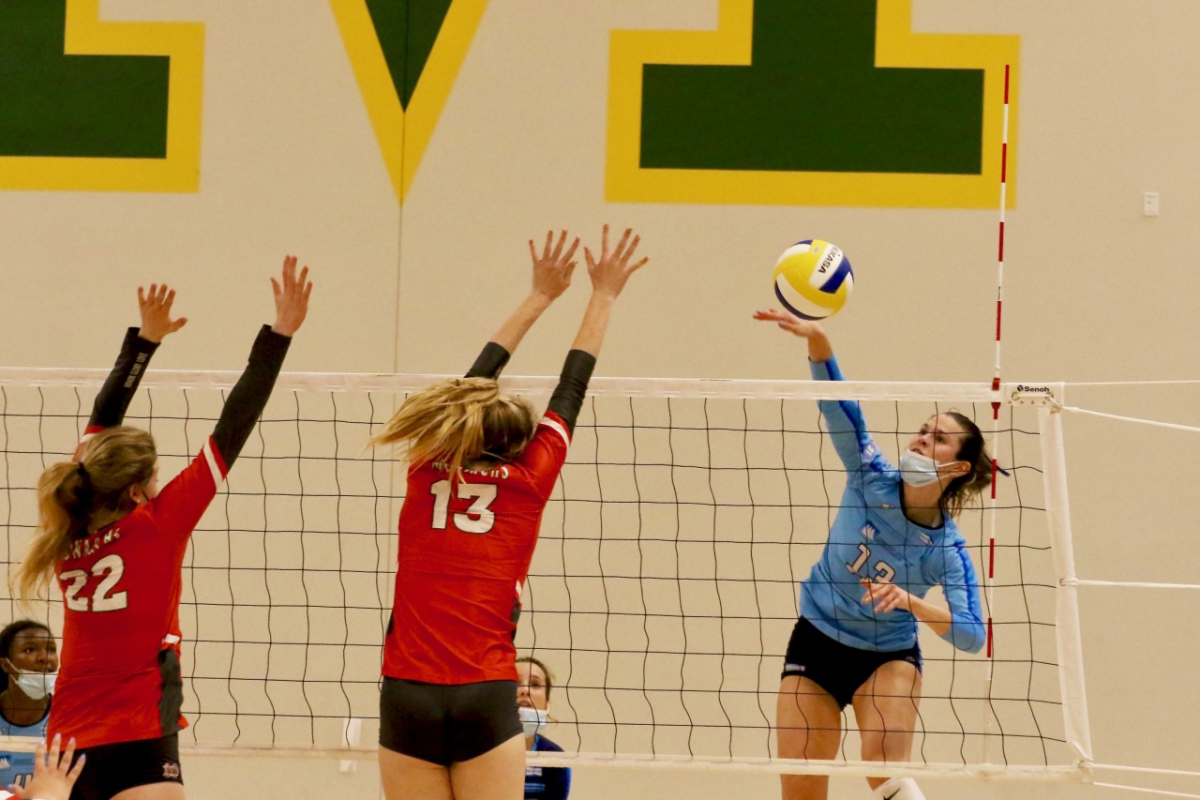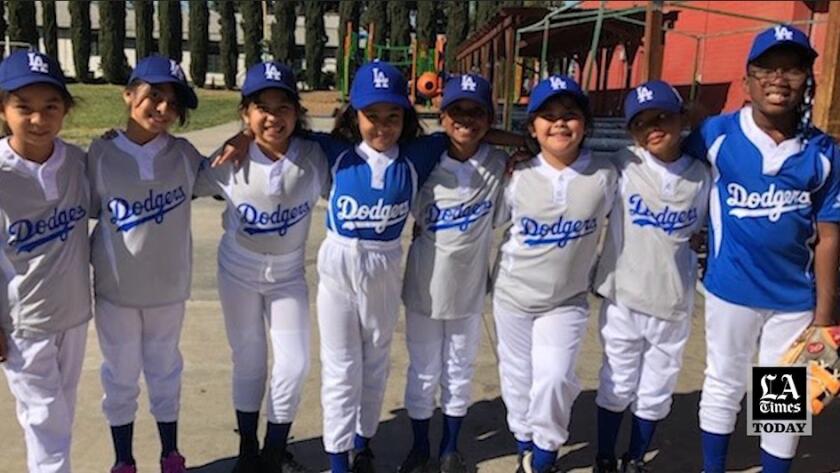Kids are losing interest in organized sports. Why that matters

This is the Dec. 6, 2021, edition of the 8 to 3 newsletter about school, kids and parenting. Like what you’re reading? Sign up to get it in your inbox every Monday.
For more than a century, team sports have been a mainstay of American childhood.
What began as a way to keep boys in cities occupied and out of trouble has evolved into a $19-billion industry, with much of that revenue being generated by elite travel teams.
Yet the number of kids involved in team sports has been falling. In 2018, 38% of kids ages 6 to 12 played an organized sport on a regular basis, down from 45% in 2008 — mainly due to increasing costs, time commitments and the hypercompetitive nature of many sports.
A report by the Aspen Institute shows that the pandemic may have accelerated this trend. The national survey conducted in September 2021 found that not only has the pandemic disrupted the supply of local sports programs — with 44% of families reporting that their community-based program had closed, merged or returned with limited capacity — but that many kids right now have simply lost interest.
I know what you’re thinking. Of course participation in team sports is down at a time when gathering in groups still poses a risk, especially for unvaccinated kids. And that reality was borne out in the data; half of the parents surveyed said fear of contracting COVID-19 prevented them from re-enrolling their kids in sports. But outside of safety concerns, nearly three in 10 parents said their child athletes didn’t want to return to the main sport they played before the pandemic.
I wanted to find out what might be driving this pattern, so I spoke to some folks who have devoted their lives to studying youth sports, including Travis Dorsch, founding director of Utah State University’s Families in Sport Lab and lead on the Aspen Institute report.
An optimistic explanation is that the pandemic created the time and space for kids to try new and different hobbies, including individual sports such as cycling and running, Dorsch said.
“The pessimistic view is that when kids tell us they aren’t interested, they’re walking away from sports entirely,” Dorsch went on. “There’s probably a little bit of both in there.”
Jennifer Agans, a Penn State professor whose research focuses on the role of out-of-school recreation in youth development, noted that many parents had an unprecedented opportunity to slow down and reassess their priorities while on lockdown. Families involved with travel teams in particular got a taste of life without hour upon grueling hour of driving to games, eating meals on the road and the unrelenting pressure to win. The cultural norm of the affluent, multi-sport athlete may have lost out to the desire for a less hectic schedule.
“It’s a broader problem with youth sports that the pandemic has shone a light on,” Dorsch said. “I don’t know that we’re doing a great job of catering to young people in sports. It’s become a very adult-driven, competition-focused context.”
The Aspen data shows that younger kids were more likely to lose interest in their primary sport. This made sense to Agans, who noted that organized sports are more attractive for a teen who’s spent years playing soccer, for instance, and has built an identity around being an athlete.
“My hunch is that kids who aren’t going back to sport are those who weren’t as invested in the first place,” Agans said.
The Los Angeles Boys & Girls Club’s baseball league enrolled 80 kids in East L.A. this spring and summer, compared to more than 300 pre-pandemic, said director of operations Carlyn Oropez. Low participation was mostly tied to safety concerns, but many kids also are just much more interested in unstructured play right now.
“I have met more and more kids who have never played sports, never been in a league,” said Charles Boyden, the baseball league’s director.
Motor skills fundamental to athletics atrophied for children who adopted more sedentary habits during the pandemic. Unsurprisingly, sports are less enticing to kids who lack those skills, said Dan Gould, director of the Institute for the Study of Youth Sports at Michigan State University.
“They’ve been home on their computers, they’ve been gaming,” Gould said. “It’s hard to get out of that pattern.”
At the same time, community programs that offer a laid-back, affordable environment for youth athletics have shrunk or disappeared during the pandemic (though experts anticipate many of these programs will rebound as more kids are vaccinated and community organizations rebuild their staffs and budgets).
Boys & Girls Club of Metro Los Angeles, which serves low-income youths in South L.A., has yet to resume its popular basketball leagues. Staffing and safety logistics — such as not being able to mix cohorts of kids and difficulty hiring folks to staff after-school programs — are the main drivers, said Patrick Mahoney, the organization’s president.
“We have no plans to bring them back any time soon, not in this current school year,” Mahoney told me. “My hope is that we can start league and game play by summer.”
Private clubs and travel teams, meanwhile, have been much quicker to recover, the Aspen study shows. In some cases, these clubs have pulled kids from school and community athletics.
Club sports can cost anywhere from $1,000 to $10,000 a year, making them financially prohibitive to many families. School sports have largely returned and are more accessible, but they can also be highly competitive and exclusive.
Clubs and some school teams are “focused on winning and trying to get their kids positioned for future scholarships and careers,” Agans said. “That’s important for families who want to pursue that goal, but that’s not the goal for everyone. We don’t want to have a pyramid-shaped picture of who participates in sports, where everyone can play soccer at 5 years old, but by 15, only the best soccer players are still at it.”
In community leagues the social, emotional and physical benefits of team sports are available to all, regardless of socioeconomic status or skill. The city of Los Angeles has recognized this by committing $160 million (donated by the LA28 Olympic and Paralympic Games and the International Olympic Committee) to the parks department’s youth athletics programs. The initiative, launched this month, aims to ensure that children ages 5 to 17 can access low-cost or free sports programming at their local rec centers.
For his part, Dorsch hopes that this shaking up of youth athletics will begin to push them in a more equitable direction.
“We have an opportunity to reimagine youth sport,” he said. “What will design and delivery of sport look like when we come out of this?”
The downside of high school sports (and other matters)
We haven’t discussed the Mater Dei High School football hazing scandal in this space yet, but it feels like it’s time. It goes beyond sports; it’s a teenager’s — and a parent’s — nightmare. My colleague, Times columnist Gustavo Arellano, has written about the sports powerhouse in Santa Ana for years and says there was nothing particularly surprising about the scandal. “Student abuse at Mater Dei isn’t a few rogue individuals over the decades; it’s institutional,” he writes. And Times sports columnist Bill Plaschke spoke to the parents of the student who was allegedly the hazing victim. He quotes the mother: “You drop your kids off at school and give them a kiss goodbye … and you feel like you’re putting them somewhere they can be safe. … Then for [Mater Dei] to turn a blind eye and be so unsupervised. ... It’s like, you failed my child.”
A school district in San Diego County is creating a separate academy for unvaccinated students so they can learn in person.
We’ve become frighteningly accustomed to school shootings. But one in Michigan last week, in which four students died, still came with an element of surprise: This time, the parents of the shooter were charged with a crime.
Here are 15 gifts for the Gen Zers on your holiday list. And here’s where you can get your family’s Christmas tree in SoCal.
Enjoying this newsletter?
Consider forwarding it to a friend, and support our journalism by becoming a subscriber.
Did you get this newsletter forwarded to you? Sign up here to get it in your inbox every week.
What else we’re reading
[Note: Some of these articles may be behind paywalls.]
School shootings like the one in Michigan are creating “trickle-down trauma” for kids who haven’t personally experienced the terror of a shooting but fear one. Washington Post
We know how to stop school shootings, one educational consultant says. We just don’t do it. Hechinger Report
School officials in Marin County are trying to figure out what to do after parents let their two kids go to school despite knowing they had tested positive for COVID-19. Eight other students contracted the virus afterward, and 75 were quarantined. San Francisco Chronicle
Gov. Gavin Newsom has a reputation for being slick. But Newsom told elementary school students in Sacramento last week that he suffers from dyslexia that traumatized him as a child. “People literally started laughing at me because I couldn’t read,” he said. “I’ll never forget it the rest of my life.” Newsom has a children’s book coming out this week about his experiences with dyslexia. Sacramento Bee
Watch L.A. Times Today at 7 p.m. on Spectrum News 1 on Channel 1 or live stream on the Spectrum News App. Palos Verdes Peninsula and Orange County viewers can watch on Cox Systems on channel 99.
I want to hear from you.
Have feedback? Ideas? Questions? Story tips? Email me. And keep in touch on Twitter.
Start your day right
Sign up for Essential California for news, features and recommendations from the L.A. Times and beyond in your inbox six days a week.
You may occasionally receive promotional content from the Los Angeles Times.





